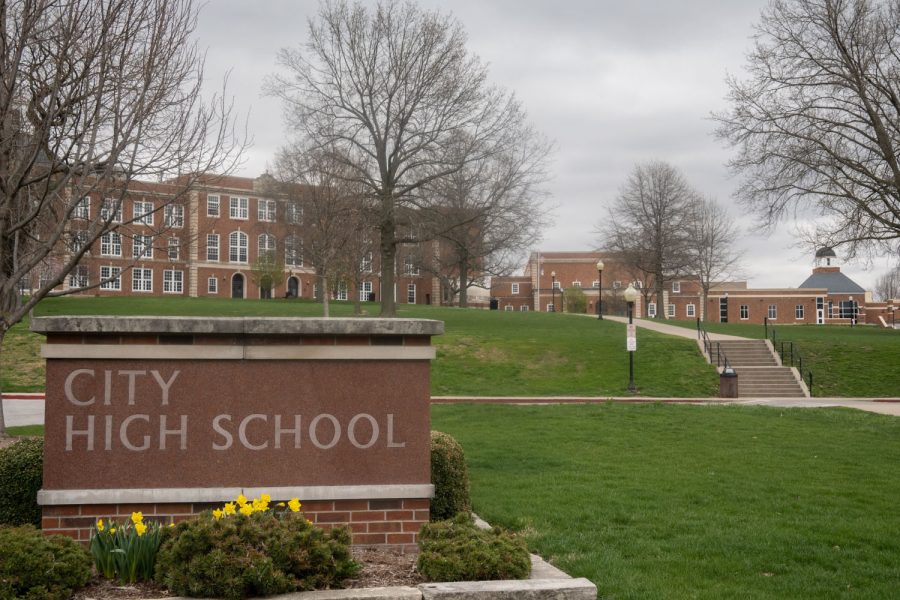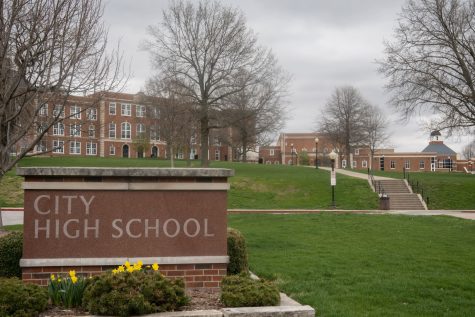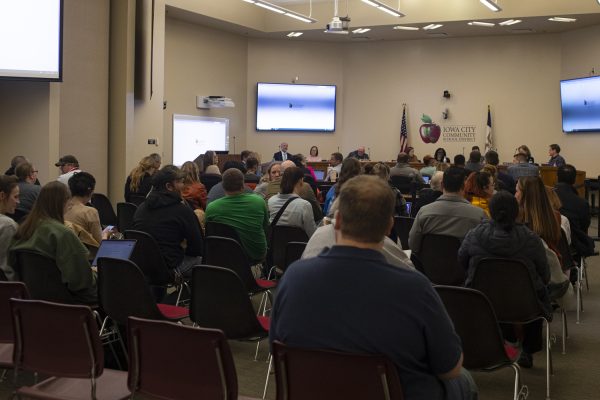Iowa City Community School District high school to build seclusion room
The district is building a seclusion room for students whose individual education plans require them, despite the former district-wide ban on the rooms in 2018.
Iowa City High School is seen on Monday, April 25, 2022.
April 25, 2022
Iowa City High School is building a seclusion room to be used for students who need a space available as a part of their individual education program.
The Iowa City Community School District Board of Education banned seclusion rooms in 2018, but voted on April 12 to reverse the ban. The board made this decision after recognizing that seclusion rooms were not aiding the district’s goal of maintaining a safe student environment, Kristin Pedersen, director of communication relations for Iowa City schools, wrote in an email to The Daily Iowan.
The building of this seclusion room will cost $24,000 and will be used as a last resort solution.
“We recognize the role that restraint or seclusion may play in maintaining a safe environment for all students within our schools,” Pedersen wrote. “We continuously evaluate ways to increase our support to students and provide a safe and supportive school environment.”
The school board reversed the decision to allow the addition of a new seclusion room for students if the individualized education program, known as IEP, requires it, said Superintendent Matt Degner during Iowa City Community School District’s Board of Directors meeting on April 12.
An individualized education program plan is discussed with the parents of the student and educators, Degner said.
“The only time we would consider the use of the seclusion room, to this level or even the construction of a seclusion room would be if it’s part of a student’s current IEP plan,” Degner said at the April 12 meeting.
The district will use other preventive measures outlined in a student’s IEP before using a seclusion room, Lisa Glenn, Iowa City Community School District director of special education, said at an Iowa City Community School District meeting on April 12.
The purpose of the seclusion room will vary depending on the student’s IEP, Iowa City Community School District Board Member Maka Pilcher-Hayek, said. Pilcher-Hayek voted for the approval of the seclusion room.
“Maybe for one student, it’s a quiet space and they just need zero stimulation,” Pilcher-Hayek said. “It’s to keep them from being triggered by something.”
The district is required to implement a student’s IEP to follow federal seclusion room standards.
“So you really have the group of experts there saying this is a component of what a student, or students, may need to be successful in our school environment,” Degner said. “That’s the only reason we would consider it.”
Since the initial district-wide ban on seclusion rooms, there have been more amendments to Iowa law concerning them, J.P. Claussen, Iowa City Community School District board member, said.
Iowa Chapter 103 spells out the requirements for seclusions rooms in Iowa schools, should districts choose to have them.
“This is not a situation that is unique to our district. All districts across Iowa are governed by the same requirements of Chapter 103 of Iowa Administrative Code 281,” Pedersen wrote. “Our goal is zero instances of restraint or seclusion at the student case level.”
Iowa Chapter 103 requires seclusion rooms to be fifty-six square feet, have sufficient lighting, ventilation, and be free of objects that could be used to inflict self-harm.
The district, in addition to the seclusion room, also has behavior interventionist positions, Claussen said.
“We have a lot more positions that focus on behavior so we have a number of behavior interventionist positions that we never had before,” Claussen said. “Those are folks that can go out to buildings kind of help problem solve, kind of troubleshoot situations.”
Pedersen wrote that the district provides support to the student at the core level and attempts to avoid crises.
“We front-load the support before the point of crisis, starting at the core level with what is available to all students and layering on supports and individualized strategies for those who may need more,” Pedersen wrote.












